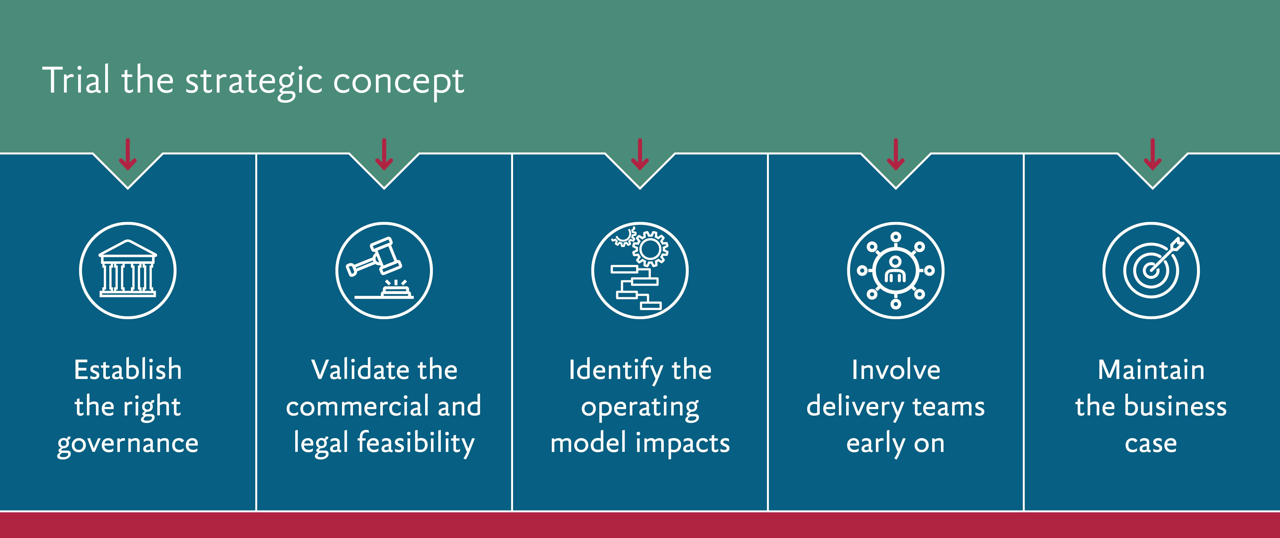The challenge of moving from strategy to delivery has never been easy. Yet business leaders are under increasing pressure to define their strategies more quickly and to deliver at lower cost – which often increases risk and makes this transition even harder.
Reflecting on our experience, we have identified six key considerations to build confidence in execution. Take these practical steps to progressively evolve and refine the strategy, while ensuring that the business is ‘operationally ready’ to drive delivery.

1. Trial the strategic concept
Testing that your strategy will work in the real world before you move into full delivery is a sound investment. It allows you to tweak, finesse or even have a wholesale rethink of any elements which don’t meet your strategic aspirations.
If your strategy is dependent on technology that is new to your organization, prototyping the solution can help to prove the technical concept and highlight any capability gaps within your operating model. Set clear objectives for what you are trying to prove – and make sure senior stakeholders understand them.
Beyond proving a technical concept, consider testing the strategy in the market through a live pilot. But be clear on what a pilot can realistically achieve. If it is not possible to test a strategy well without putting substantial new capabilities in place, then a pilot may not be the best approach.
2. Establish the right governance
Getting the right people around the table frequently to kick-start a strategic initiative will certainly provide early direction and lean decision making. As the initiative gathers pace and branches out to other operational areas, it’s important to evolve the governance group to build buy-in and maintain alignment across the broader organization.
3. Validate the commercial and legal feasibility
When trialing, using key performance indicators such as transaction volumes, revenue uplift or customer feedback can provide early insights into the potential commercial impact of your strategy, and allow you to flex it accordingly.
If relevant, validate the legal feasibility of the strategy. This might include testing market regulations, employment law, competition law and so on. Identify potential risks and confirm pragmatic and actionable mitigations.
4. Identify the operating model impacts
It is important to make sure that the business can operate the strategy on an ongoing basis once the program to implement it has been delivered.
Testing the strategy will help assess what new capabilities will be needed, but understanding who is going to establish them is paramount to operational success. For example, when speed is of the essence, acquiring capability externally can help to prove the strategy, but it's crucial to develop a long-term roadmap for if and how that capability will be built into the organization.
5. Involve delivery teams early on
Those who will be responsible for delivering the strategy should be part of the team working out how to put it into operation.
This will test feasibility before the strategy radiates out further and will help shape a realistic implementation approach, build an understanding of the business requirements, and drive engagement from the delivery team.
6. Maintain the business case
As the strategy evolves through trialing, so should the underpinning business case. As you gain more understanding over what will be needed to achieve the strategic outcomes, expected costs and benefits should be modelled to make sure the case for change is still compelling. This will generate confidence when transitioning into delivery.
These ‘strategic testing’ considerations require investment and rigor, but if overlooked can have a real impact on the cost and success of the subsequent delivering the strategy.












